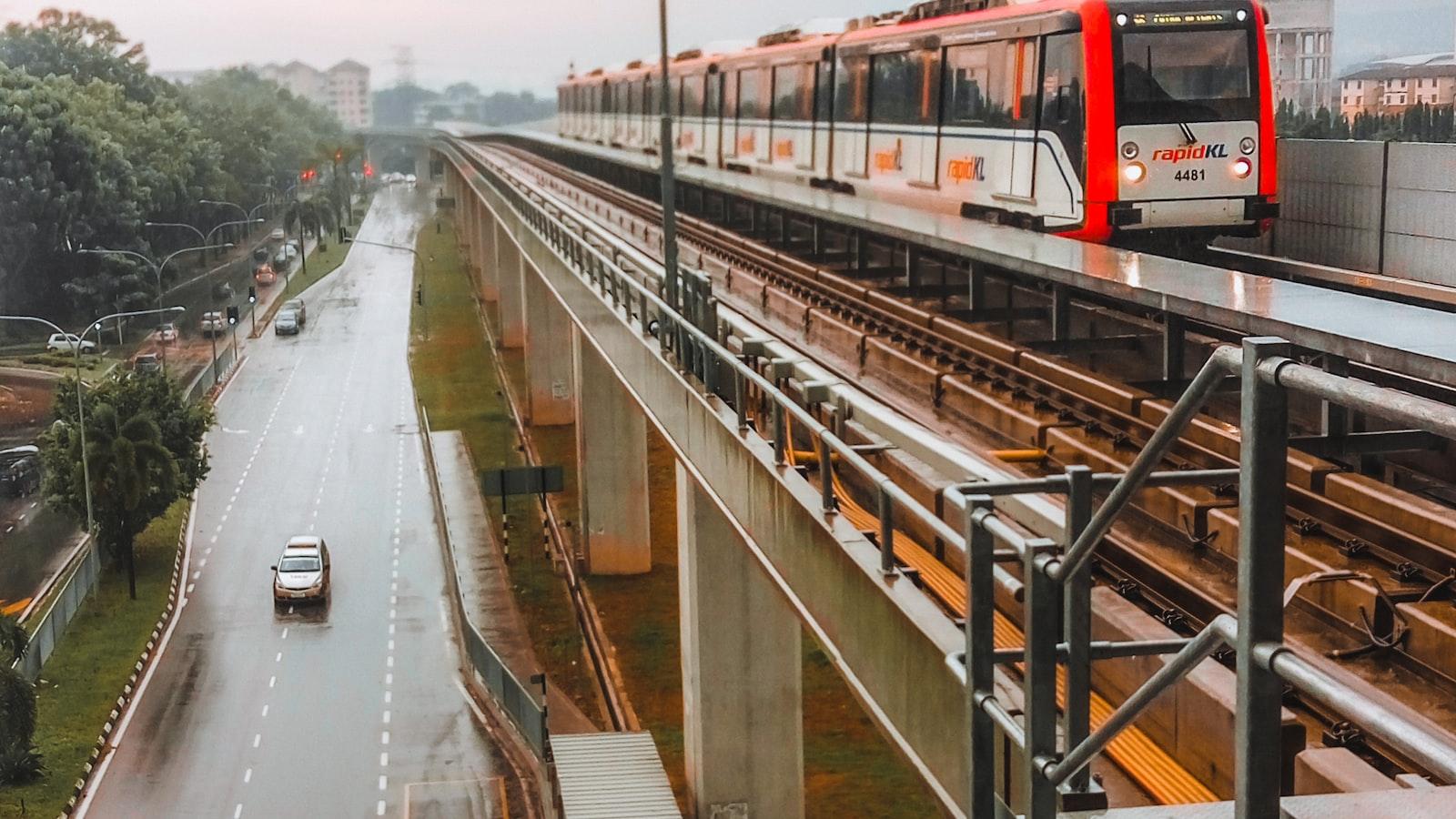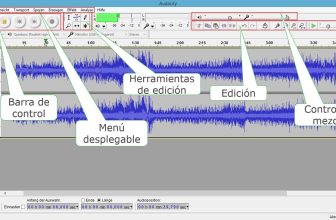
Originally posted 2024-01-15 21:16:33.
Heading out on public transit may seem daunting at first, especially for those unfamiliar with navigating the intricate network of buses, trains, and trams. Yet, with a little guidance and some easy-to-follow tips, mastering the art of using public transit can be a breeze. Whether you’re a newcomer to a city, an occasional traveler, or simply looking to reduce your carbon footprint, this article will provide you with a comprehensive guide on how to effectively utilize public transit systems. From understanding fares and routes to planning your journey and ensuring a smooth ride, this informative piece will equip you with all the knowledge you need to confidently embark on your transit adventures. So, let’s delve into the world of public transit and discover the essential tips and tricks for becoming a savvy passenger.
Introduction to Transits
Transits are an essential tool for surveyors and construction professionals. They provide accurate measurements and enable precise positioning of objects. If you’re new to transits, here’s a step-by-step guide on how to use them effectively.
-
Familiarize Yourself with the Transit: Start by understanding the different parts of a transit. These typically include the telescope, leveling screws, horizontal and vertical circles, and the tripod. Make sure all components are in good working condition before proceeding.
-
Setting Up the Transit: Choose a stable and level location for the transit. Extend the tripod legs and secure them firmly into the ground. Adjust the leveling screws to make the instrument horizontal. Use a bubble level to ensure accuracy.
-
Align the Transit: Before taking measurements, you need to align the transit with a known reference point. This could be a fixed object, such as a survey marker or a building corner. Using the horizontal and vertical circles, adjust the telescope until it is pointing at the reference point.
-
Taking Measurements: Transits can measure both horizontal and vertical angles. To measure a horizontal angle, sight the transit on a target object and record the reading shown on the horizontal circle. For vertical angles, adjust the telescope vertically and note the reading on the vertical circle. Make sure to double-check your readings for accuracy.
-
Calculating Distances: Transits can also be used to determine distances by using the double centering method. This involves measuring the angles between two points and calculating the distance between them using trigonometry. Alternatively, you can use laser rangefinders or other distance-measuring equipment for more accurate results.
In conclusion, understanding the basics of using a transit is crucial for effective surveying and construction work. By familiarizing yourself with the transit, setting it up correctly, aligning it with reference points, taking accurate measurements, and calculating distances, you’ll be able to optimize the use of this valuable tool. Remember to always adhere to proper safety protocols and consult professional guidelines when using transits.

Understanding the Different Types of Transits
Transits are an essential tool for astrologers and astrology enthusiasts alike. They provide valuable insights into the current astrological climate and how it may impact individual lives. As we delve into the world of transits, it’s important to understand the different types and how to effectively use them in our astrological analyses.
1. Planetary Transits
Planetary transits occur when a planet in the sky makes contact with a specific point in an individual’s natal chart. These transits can have a significant influence on our emotions, actions, and overall life experiences. For example, when Mercury transits our natal Moon, we may find ourselves expressing our emotions more freely or experiencing heightened creativity.
2. Lunar Transits
As the Moon swiftly moves through the zodiac, it forms aspects with various planets in our natal charts. Lunar transits highlight our subconscious realms, emotional states, and instincts. For instance, a Moon conjunct Mars transit can ignite our passions and spur us into taking bold and assertive actions.
3. Outer Planet Transits
Outer planets, such as Uranus, Neptune, and Pluto, have long-lasting transits that shape entire generations. As these planets move slowly, their transits to personal planets can create profound shifts and transformations. For instance, a Pluto square Sun transit may bring intense challenges and profound personal growth.
4. Retrograde Transits
Retrograde transits occur when a planet appears to move backward in the sky, although it is simply an illusion caused by the Earth’s orbit. Retrograde transits often signify periods of introspection, review, and reevaluation. They offer an excellent opportunity for unwinding, reconnecting with ourselves, and reassessing our goals.
5. Eclipse Transits
Eclipses are potent events that occur when the Sun, Moon, and Earth align. These cosmic events often coincide with significant life changes and transformations. Solar eclipses represent new beginnings and opportunities, while lunar eclipses symbolize endings, release, and emotional illumination. Understanding the impact of eclipses on our natal chart can help us navigate these pivotal moments with grace.
By familiarizing yourself with these different types of transits, you can harness the power of astrology to gain deeper insights into your life’s unfolding story. Whether you are an astrologer or simply someone seeking self-awareness, understanding transits adds another layer of understanding to the cosmic symphony that shapes our lives.

Step-by-Step Guide: How to Properly Set Up a Transit
A transit is a versatile tool used in various industries such as construction, surveying, and engineering. Whether you are a beginner or experienced user, understanding how to properly set up and use a transit is essential for accurate measurements and efficient work. In this step-by-step guide, we will walk you through the process of setting up a transit and utilizing it effectively.
-
Gather the necessary equipment:
Before you begin, make sure you have all the required equipment. This typically includes a transit (also known as a theodolite), tripod, leveling rod, plumb bob, and measuring tape. Ensure that all equipment is in good working condition and properly calibrated. -
Find a level and stable setup location:
Identify a suitable location to set up your transit. It should be a flat and stable surface to ensure accurate measurements. Avoid areas with excessive wind or vibrations. -
Set up the transit on the tripod:
Extend the tripod legs and secure them firmly in place. Mount the transit on the tripod head, making sure it is secure. Use the leveling screws on the tripod to adjust the transit until it is level. -
Align the transit using the leveling screws and plumb bob:
To achieve accurate measurements, align the transit using the leveling screws. Adjust the screws until the bubble in the level is centered. For precise vertical alignment, use a plumb bob to ensure the transit is perfectly plumb. -
Calibrate the transit for accurate measurements:
Before using the transit, calibrate it to ensure accurate measurements. This typically involves sighting a known reference point and adjusting the crosshairs until they align with the target. The transit may have additional features such as horizontal and vertical locks, which you can utilize for more stability during measurements.
Remember, practice makes perfect when it comes to using a transit. Familiarize yourself with the features and functions of your specific transit model. Don’t forget to take proper care of your equipment, storing it securely and protecting it from damage. With the proper setup and usage, a transit can be a valuable tool that helps you achieve precise measurements and enhance your work efficiency.
Utilizing the Transit for Accurate Measurements
A transit is a precision instrument used by surveyors and engineers to measure and map large areas of land. It is a crucial tool that allows for accurate measurements, leveling, and alignment. In this post, we will explore how to use a transit effectively for obtaining precise measurements.
-
Set up the Transit: The first step in utilizing a transit is to set it up correctly. Choose a stable and level area to place the tripod. Attach the transit securely to the tripod, ensuring it is level using the built-in leveling bubble. Once level, lock the tripod legs in place to maintain stability during measurements.
-
Calibrate the Instrument: Before taking any measurements, it is crucial to calibrate the transit to ensure accurate results. This involves sighting a known benchmark or reference point and adjusting the transit until it aligns perfectly. Make any necessary adjustments following the manufacturer’s instructions or consult a professional if needed.
-
Sight Your Target: To begin measuring, locate your target by using the transit’s telescope. Look through the eyepiece and adjust the focus until the target is clear. Aim the transit at the desired point and lock it in place to maintain accuracy throughout the process.
-
Take Measurements: Using the reticle or crosshairs in the telescope, line up the target precisely. Depending on the type of transit, measurements can be taken horizontally or vertically. For horizontal measurements, rotate the transit horizontally, keeping the target in sight. Use the graduated scale on the transit to record the measurement accurately.
-
Record and Analyze Data: After obtaining the measurements, it is crucial to record them accurately for further analysis. Consider using a spreadsheet or a digital tool to ensure accuracy and ease of analysis. Analyze the collected data to make informed decisions regarding land measurements, constructions, or any other application where precise measurements are essential.
Using a transit for accurate measurements requires practice and a good understanding of the instrument’s functions. It is crucial to handle the transit with care, keep it clean, and store it properly to maintain its precision. By following these steps, you can harness the power of a transit for precise measurements, enhancing the quality of your surveying work.
Expert Tips and Best Practices for Using a Transit
So you’ve decided to take public transit, but you may be wondering how to make the most of your experience. We’ve compiled a list of expert tips and best practices to help you navigate the transit system like a pro. Whether you’re a seasoned traveler or a newbie, these strategies will surely enhance your transit adventures.
Plan your route in advance: Before embarking on your transit journey, it’s always a good idea to plan your route ahead of time. Familiarize yourself with the schedule and stops, and decide which routes and connections work best for your needs. Mobile apps and websites can provide real-time updates, so you can adjust your plans if necessary.
Arrive early: One of the key elements to stress-free transit travel is to arrive at the stop or station early. This will give you ample time to navigate through any unexpected delays, purchase tickets if needed, and ensure that you catch your desired transit service. Remember, it’s better to be early and wait than to miss your ride!
Be aware of your surroundings: When using public transit, it’s important to remain alert and aware of your surroundings. Keep an eye on your belongings to avoid theft or misplacement, and be mindful of other passengers. Avoid distracting activities such as excessive phone use or loud conversations that may disturb those around you.
Follow transit etiquette: To ensure a harmonious journey for everyone, it’s essential to follow transit etiquette. Allow passengers to exit before boarding, and give up your seat to those in need. Keep conversations quiet and respectful, and avoid blocking doorways or aisles with bags or excessive personal belongings.
| TIP: | Always carry small bills or exact change when using cash fare systems to avoid delays or inconvenience. |
|---|---|
| TIP: | Consider purchasing a discounted transit pass or card for frequent travelers to save money and streamline your rides. |
Stay informed: Always stay up-to-date with transit news and announcements. Sign up for alerts from your local transit agency or check their website for any service changes, disruptions, or special events that may affect your journey. By being proactive and well-informed, you can avoid surprises and plan your trips accordingly.
By following these expert tips and best practices, you’ll be well on your way to mastering the art of using a transit system. Remember, public transportation is not only a convenient and eco-friendly option, but it also offers fascinating insights into the communities you’re exploring. So sit back, relax, and enjoy the ride!
Q&A
Q: What is a transit?
A: A transit is a mode of public transportation, usually operating within a city or urban area. It typically refers to buses, trams, subway trains, or light rail systems that transport passengers from one destination to another.
Q: Why should I consider using transit instead of driving my own vehicle?
A: Using transit offers several advantages over driving a personal vehicle. It can save you money on fuel, parking fees, and vehicle maintenance costs. Transit systems are designed to move large numbers of people efficiently, reducing traffic congestion and improving air quality. Additionally, using transit can help reduce your carbon footprint and contribute to a more sustainable environment.
Q: How do I find the nearest transit stop to my location?
A: To find the nearest transit stop, you can use various resources. Transit apps or websites specifically designed for your city or region can pinpoint the locations of transit stops, provide schedules, and even real-time arrival information. Additionally, maps available at transit stations, city websites, or information centers can guide you to the nearest stop.
Q: How can I plan my transit trip?
A: Planning a transit trip is relatively straightforward. Start by determining your origin and destination points. Then, consult transit maps, apps, or websites to find the appropriate routes and schedules. Keep in mind that different transit options may be available, such as express routes or transfers, which require switching between different vehicles or lines. It is advisable to check the schedules in advance and plan for any potential connections or delays.
Q: How do I pay for transit fare?
A: Payment methods for transit fares vary depending on the city or region. Common methods include purchasing tickets or passes from vending machines at transit stops, using contactless payment cards or mobile apps, or paying the fare directly to the driver when boarding a bus or tram. Some systems may require fare cards that need to be loaded with credit in advance. Information on fare payment options is usually available on transit websites or at customer service centers.
Q: Are there discounts available for frequent transit users?
A: Many transit systems offer discounted fares for frequent users, such as daily, weekly, or monthly passes. These passes are convenient and often more cost-effective for those who use transit regularly. Some cities also offer reduced fares for seniors, students, or individuals with disabilities. It is recommended to check with your local transit agency for available discounts and pass options.
Q: How can I ensure a safe and comfortable transit experience?
A: To ensure a safe and comfortable transit experience, it’s important to follow a few guidelines. Be aware of your surroundings and keep personal belongings secure. Listen to any announcements or instructions provided by transit operators. It’s also essential to respect other passengers, maintain good hygiene, and observe any rules or regulations posted within the transit system. If there are any concerns or emergencies, contact the appropriate transit officials or authorities.
Q: Is transit available during weekends and holidays?
A: In most cities, transit services are available during weekends and holidays, but the frequency of service may vary. It is advisable to check the schedules in advance, as some routes may operate on reduced timetables or have different service hours on these days. Transit agencies often provide updated information regarding schedule changes on their websites or through other communication channels. In conclusion, utilizing public transit can be a convenient and eco-friendly way to navigate your city or explore new places. By following these simple guidelines, you can ensure a smooth and enjoyable journey:
-
Plan Ahead: Take the time to research your route and schedules beforehand, ensuring you are aware of the destinations, transfers, and any potential delays.
-
Prepare Your Fare: Remember to have your fare ready in advance, whether it’s a ticket, pass, or exact change. This will help keep the line moving and streamline the boarding process.
-
Stay Alert: Pay attention to announcements and displays inside the transit vehicles, as they will provide important information regarding stops, transfers, and any service disruptions.
-
Respect Fellow Passengers: Be considerate of other passengers by practicing good etiquette, such as offering your seat to those in need, keeping your belongings contained, and refraining from loud conversations or playing music.
-
Exit Gracefully: When reaching your destination, gather your belongings and make your way towards the exit. Allow others to disembark before stepping off the transit vehicle to maintain a smooth flow of traffic.
By embracing these simple yet important tips, you can confidently navigate the public transit system and make the most of your journey. Enjoy the convenience, cost-effectiveness, and environmental benefits that public transportation has to offer, while also contributing to the well-being of your community. Happy travels!






